Henner Lehne, vice-president, Global Vehicle Forecasting, Automotive, S&P Global Mobility presents his analysis and predictions for the global and regional vehicle sales and production outlook.
At Automotive Logistics & Supply Chain Europe 2024 in Bonn, Germany, Lehne said the volume outlook has profound ramifications for both inbound logistics and finished vehicle logistics in terms of managing capacity, making crucial investments, optimising overarching strategy and achieving the green transition.
Global outlook for recovery post-pandemic
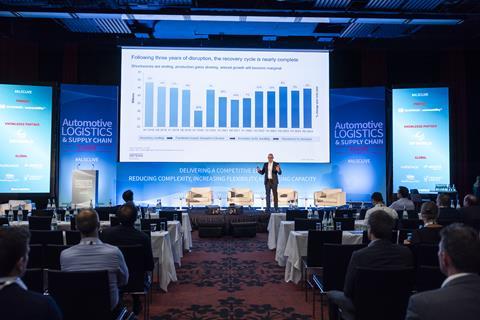
We have had three years of deep disruption, with the Covid crisis from 2020-2021, the semiconductor crisis in 2021-2022, plus the Ukraine war contributing to rising energy costs and high inflation. All these factors combined have profoundly shaken up the automotive supply chain, however, the major shockwaves are ending, production gains are slowing, and annual growth increases will become marginal.
In the short-term, we are “seeing light at the end of the tunnel,” according to Lehne. He told delegates we have been through four phases over the past few years of disruption; an inventory venting phase (the depletion of inventory), the supply chain disruption phase, the inventory rebuild phase, which we’ve seen since 2022, and now in 2024, the reconnecting with demand phase.
Lehne’s forecast revealed that global light vehicle volumes have only just recovered to pre-pandemic levels, from 89m units in 2019 to 90m units in 2023. Comparing 2023 volumes of 90m units with expected 2024 volumes of 89.9m units elicits only a marginal 0.4% decline year on year. However, those figures mask an underlying inventory problem. Production this year is expected to be flat, fundamentally due to too much inventory.
“And we are, inventory wise, actually back to where we were before, if not even higher,” Lehne said. “The outlook for this year is flat versus last year because we had an acceleration of production, especially in the second half of last year, which led to nearly 90m units of global production, whereas demand only came up with 86m units. So, in addition to the inventory we built up already from 2022 onwards, we have another 3.5m to 4m units.”
Regional differences in volumes
However, there were significant regional differences when comparing 2019 volumes with 2023 volumes.
In the mature markets, Europe’s volumes (without Russia) were down 13%, North America down 4%, and Japan down 7%. South Korea was the only exception, up 7%. Volumes from Russia and the Commonwealth of Independent States (CIS) was understandably quite a long way down by 41%, due to the Russia-Ukraine war and withdrawal of most major western OEMs. Emerging markets such as India performed well, up 30%. And then of course, the main driver of the global automotive market, mainland China, was up 18%.
When analysing regional differences between 2023 and 2024, there is expected to be a slightly more positive outlook, although still a weakness in mature markets compared to emerging markets.
For the mature markets, Europe (without Russia) is expected to be down 4%, North America up 1%, Japan down 7%, and South Korea down 3%. Russia and the CIS is likely to be up by 8% as Chinese OEMs move to fill the OEM vacuum left by exiting western OEMs.
In terms of emerging markets, India is likely to perform well, up 4%, and mainland China is likely to be up by 2%.
Diverging fortunes of new carmakers versus legacy OEMs
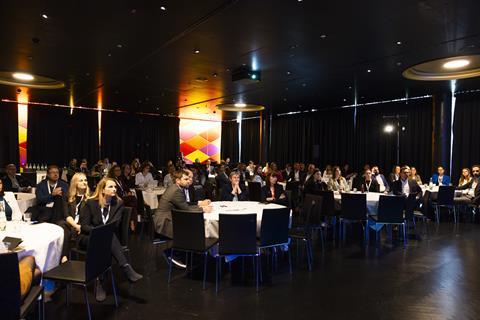
The overall volume picture is also underpinned by significant undercurrents in the evolving success of new OEMs versus legacy OEMs, which impacts inbound logistics volumes, but will especially affect finished vehicle logistics flows.
“If we’re looking at the key players here, we also see a quite interesting dynamic,” Lehne said. “We see that all major legacy OEMs (besides Toyota) are really struggling to get back to pre-2019 volumes.”
He said that VW volumes have reduced, while Stellantis, Renault, Nissan and Hyundai are flat, with GM, Honda and Ford “really struggling”, which Lehne said is to do with the market in the US but also the performance in China.
The pandemic allowed the Chinese industry to rapidly develop EVs and steal a march on western OEMs in the electric market, he said. “Because one thing we saw in China, the curtain closed, the pandemic came, the curtain opened up, and we had a fully-fledged, very well executed automotive industry in the electric space suddenly,” he added, “which really was catering to the demand of the Chinese consumer.”
So, who are the winners in this pivot away against legacy OEMs? “Tesla, of course, and BYD,” Lehne said. He said that BYD’s electric share grew enormously in the last two years, by 2 million units from around 300,000 units. “They made these enormous jumps with the right product for the right market. And the other Chinese OEMs clearly are also winning.”
The shift to electrification has elevated Tesla and BYD, whilst all legacy OEMs are struggling, mainly due to declining performance in China. And as a result, a new hierarchy is emerging.
Inventory rebuild and its influence on production activity
Globally, inventory levels have been rebuilding. The generally agreed optimal inventory level is assumed to be 15%, and the historical precedent here is illuminating when applied to the current scenario.
Lehne said: “We’re keeping production flat this year, because there’s just too many vehicles built.” Due to easing of supply chain constraints, improving production and slowing demand, inventory levels have started to build beyond that 15% optimum to reach 18%, with inventory of around 16m vehicles globally in 2024. The automotive industry has changed from being production constrained during the Covid period and reverted back to being demand constrained, and this is expected to continue until 2026.
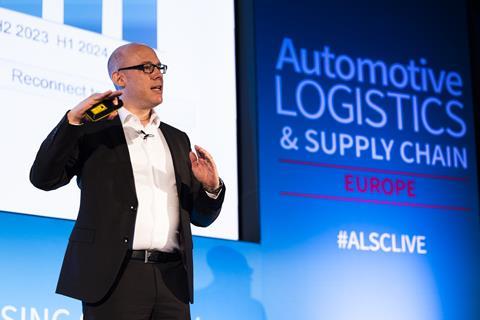
There are multiple industry trends and cost factors holding back vehicle demand. “The markets are, from a demand side, still not favourable to buy cars. Small cars are going away, and cars are becoming more and more expensive,” Lehne said. “And that’s not even speaking of the electric vehicles. The entry to drive is actually priced out of the market.”
Furthermore, with the ‘super election’ year around the world, due to European elections and the US election alongside others, there is a lot of political movement which Lehne said is further driving uncertainty in the consumer. “Therefore, we don’t believe that demand will now skyrocket and further accelerate so that we can deplete that inventory,” he said. “The consequence will most likely be that production will be lowered. And we could see not only this year, but also next year, a plateau phase before then. Demand has caught up with supply again.”
Long-term global outlook
Longer term, the global volume forecast is indicating moderate growth, with global light vehicle production expected to rise from 90m units this year to 98m in 2031, and sales expected to increase from 88.6m units to 97.8m in the same timeframe.
But an important dimension to this forecast is how the pandemic pause has impacted the overall automotive industry volume outlook.
“There is a whole wipeout of six, seven years of output capacity,” Lehne said, “and I think I showed it last year. We estimate around 55m units of vehicles got deleted with the crisis versus what was originally planned.”
Of course, there are regional differences within the vehicle production volume outlook. The mature markets of Japan, South Korea, North America, Europe are not likely to return to pre-pandemic output levels. “The whole game of growth will come out of greater China and South Asia,” said Lehne.
North American production is expected to remain flat, from 16m units this year, to 17m in 2027, and back to 16m in 2031. This is mainly due to the Detroit 3 which are expected to stagnate or decline under increasing pressure from Tesla and localising Chinese OEMs taking advantage of Mexico’s lower costs and USMCA free trade area.
In Europe, production is expected to also remain fairly flat, from 17.3m units in 2024 to 18.4m in 2031. The continent is experiencing headwinds including emissions targets and safety regulations which could make European vehicles more expensive, and the growing threat of cheaper Chinese EVs. Some OEMs are calling for strict trade barriers and support the European Commission’s investigation into allegedly unfair Chinese OEM state aid to their domestic OEMs, whilst others have stated they do not want trade barriers as China could retaliate by erecting trade barriers in China – potentially harming to a much greater degree European OEM exports to China in the process. There have been calls for an ‘Airbus’ type pooling of automotive assets to help compete with and achieve Chinese economies of scale. Nonetheless, European import of Chinese OEMs is predicted to progressively increase from 2024 to 2031.
In terms of vehicle type trends, light commercial vehicles are expected to get a boost, as well as the growing premium segment including Tesla. “So we see a clear picture of winner and losers across the forecast horizon. And the reasons are simple, right? LCV assets, small transport, premium cars, the rich getting richer. There’s so much money in the world. And the demand for high end vehicles is going to grow, clearly, because it’s still a status symbol,” said Lehne.
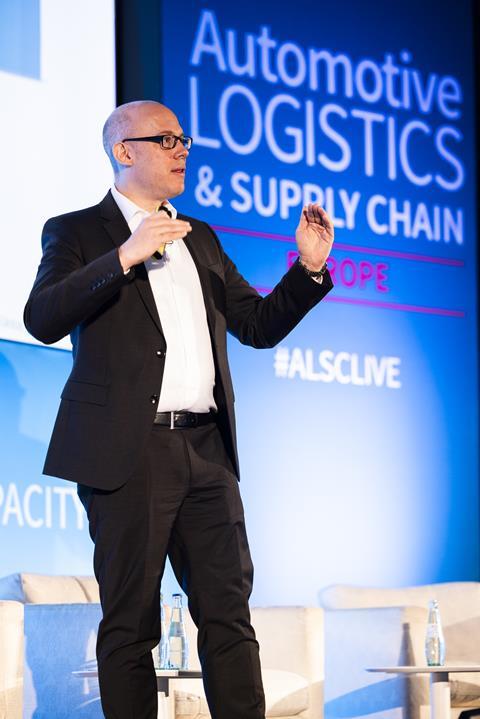
While EV trends are difficult to predict, Lehne warned legacy OEMs not to get caught playing catch up. The Chinese are ahead in many ways as they have had higher EV subsidies and purchase incentives, were early to design e-architectures from scratch and are in many ways perceived to be ‘one and a half to two generations ahead’ of legacy OEMs’ electric vehicles. And if EV subsidies and incentives are withdrawn, then many legacy OEMs may choose to play it safe and not invest as much in EVs. Lehne said this would only benefit those currently leading on the EV side, while OEMs that don’t invest now will have a “hard awakening” playing catch up later down the line.
“It is very complex to reengineer these vehicles,” he said. “The assembly, the logistics, and also what the consumer is expecting from these kind of [electric] vehicles is very challenging.”
How China’s competition will grow in the next decade
The Chinese production outlook is expected to strongly increase over the next decade from 29m units in 2024 to 33m units in 2031. Exports are growing based on significant production cost advantages and increasing production quality, leading to growing penetration beyond Asian emerging markets and penetration further afield into Europe and North America. Slowing domestic Chinese demand is also driving more exports growth.
Of course, for Chinese OEMs to penetrate Europe, they will have to contend with rising protectionism, such as rules of origin trade barriers and tariffs. The same also applies to Tesla whilst it produces large volumes from its Shanghai, China plant and exports outside of China. Many Chinese EV OEMs have already accepted this reality and will partly localise production by setting up plants in Europe or North America to circumvent these trade barriers. For example, BYD is setting up a plant in Hungary which is well placed to tap into the battery supply chain and automotive cluster within the central European region.
Many western legacy OEMs, such as VW, Ford and Stellantis, have set up joint venture companies in China to tap into the world’s largest automotive market, often partnering with Chinese battery companies on the EV front. However, legacy OEM ICE sales are struggling in China, and legacy OEMs’ EVs are faring even worse compared to domestically manufactured EVs which Chinese consumers seem to prefer from a design and technology standpoint. Western legacy OEMs are becoming weaker in China, unable to compete on price, technology and rapid development cycles, putting a question mark over their strategy in China. So, could we see some OEMs pull out of China because it gets too difficult?
“We see various announcements of established manufacturers, such as VW and Stellantis, trying to partner with some of these young start-up battery companies over there, said Lehne. “But yes, it could well be that we see further exits from the Chinese market.”
It may also result in more partnerships or consolidation with local OEMs in developing the likes of electric platforms. Nonetheless, we see very strong export growth from Chinese domestic EV brands, plus Tesla, to Europe and the rest of the world. Such is the expected onslaught that Chinese brands such as BYD and SAIC have already procured their own ro-ro vessels to transport high volumes of EVs to Europe.
Chinese OEMs, whether manufacturing domestically or more localised, are becoming a major economic force due to their lower cost, improving quality, and technological features which can equal or even outperform legacy autos offerings – particularly so in the area of electric vehicles and software-defined vehicles.
The increasing dominance of domestic OEMs in the mainland China market, is placing intense pressure on Western legacy OEMs, which is leading to varying responses including withdrawal, downgrades, platform sharing (VW/Ford MEB shared EV platform is an example), plus joint ventures and collaboration.
The competitive pressures are being exported overseas, despite growing protectionist measures, so no major region is immune from the effects.
ALSC Europe 2024 took place 19-21 March in Kameha Grand Bonn, Germany. For more interesting discussions, key points and takeaways from the event, as well as Red Sofa video interviews, visit our highlights page.
To find out more about ALSC Europe and register for next year, click here.


























![Global[1]](https://d3n5uof8vony13.cloudfront.net/Pictures/web/a/d/s/global1_726550.svgz)







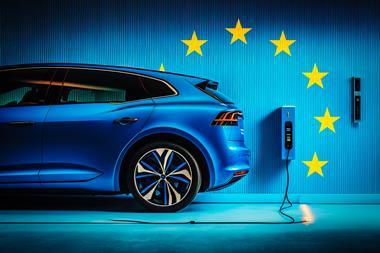






No comments yet